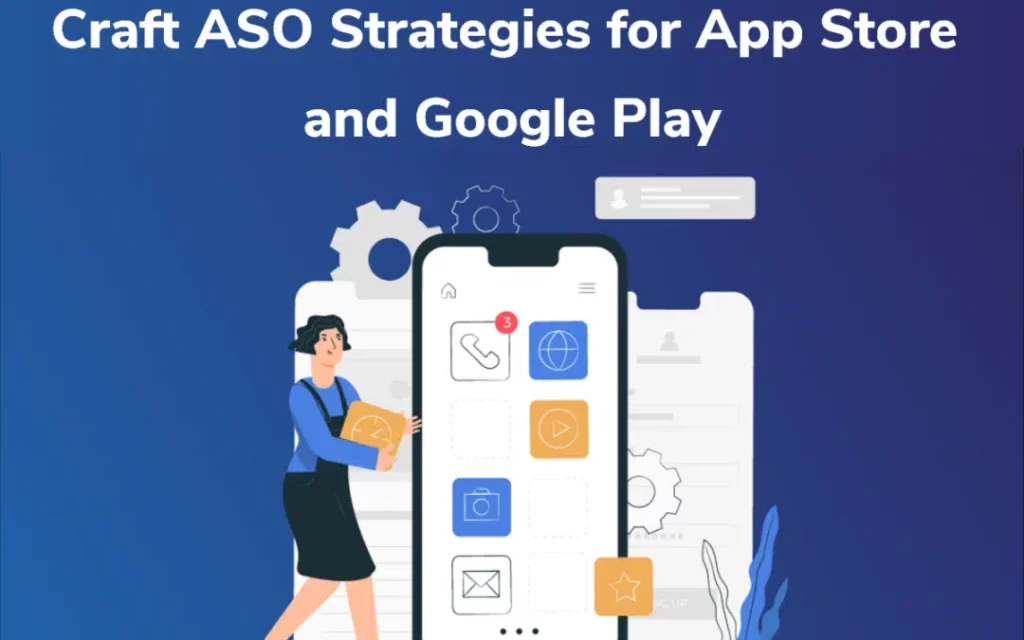Apple app store and Google Play are the most prominent app stores. Their expansive user network is the most popular platforms to promote your app. Therefore, the challenging part is crafting different Aso strategies for App store and Google Play.
Understanding the differences in the optimization and marketing methods in the Apple app store and Google Play is an essential precondition. Some guidelines and requirements considered critical in Google Play might not be available in the Apple app store. It would help if you studied the user behavior and changing trends of iOS and Android systems.
To make your ASO technique successful, you need to know the differences between Google Play Store and the Apple app store.

Aso strategy for App store and Google Play.
- Your App store optimization strategy must align with the app store algorithm’s requirements.
- . Classification and app ranking is not public, so the strategy to influence the algorithms of both app stores will differ.
- Keywords carry weightage in both Google Play and Apple App Store. The most relevant keywords in the app’s metadata can influence the app store search results and classification.
- The number of downloads over a short period is another essential factor that app stores consider while ranking your app.
Google Play algorithm
- Google Play’s algorithm looks through your app’s every text element for keyword indexing. Hence, include the target keywords with appropriate density in the app title and short and long descriptions.
- Other aspects, like the app developer’s credibility and app links, can also influence the ranking of your keywords. So, using the keywords up to five times in the app description and once in the app title is ideal. This can boost keyword indexing.
- Google Play algorithm also considers your app’s user engagement. Therefore, it is as important to gain quality users as it is to increase the installs. Also, respond to users’ reviews and queries in the right tone.
- The other key metric that Google Play monitors is your app’s UX. The algorithm looks for flawless apps with the least number of functionality issues. So, ensure a smooth user experience to be noticed by the Google Play algorithm.
Apple app store algorithm
- Apple app store provides a unique field to promote your app’s keywords. While Google Play’s algorithm is straightforward in looking for keywords, Apple App Store’s algorithm gets keywords from your competitors and the app’s category.
- The app title is for 30 characters. However, the app store provides a subtitle field that can be 30 characters long, which will also be considered for app indexing.
- Unlike Google Play, you need not repeat the keywords in the app title and keyword field in the Apple app store. Also, the App store’s algorithm does not favor misspellings or plural forms of the same keywords.
- Instead, using long-tail keywords without special characters is ideal for saving space in the keyword field.
- App store indexes your in-app purchases also. So, it is essential to optimize your keywords and implement search ads.
Key differences between Apple and Google Play Store.
The layout of the search results and the interface of both app stores are different.
Search Results: Both App Store and Google Play show your app’s title, icon, developer name, and rating in the search results. However, the Apple app store shows up to three screenshots in the search results. The search result layout has shrunk, showing two apps instead of one.
App audience: Both app stores strive to provide high-quality apps to the right target audience, although the user behavior differs. Google Play users mainly consider the app’s visual elements to decide than the app store users. In comparison, iOS users look at other app elements and in-app purchases to decide.
App updates: Apple’s approval to critical to make changes to almost everything in your app. But, in Google Play, the changes can be submitted instantly. To make publishing easier, updating your ASO plan is vital.
Conclusion.
Experience the advantage of Aso strategies for App store and Google Play, their broad network. However, to succeed in your app store optimization, you must clearly understand both app stores’ differentiating aspects.
Once you understand the differences, you can tweak your launching, analyzing, and optimizing techniques to succeed in both app stores.
